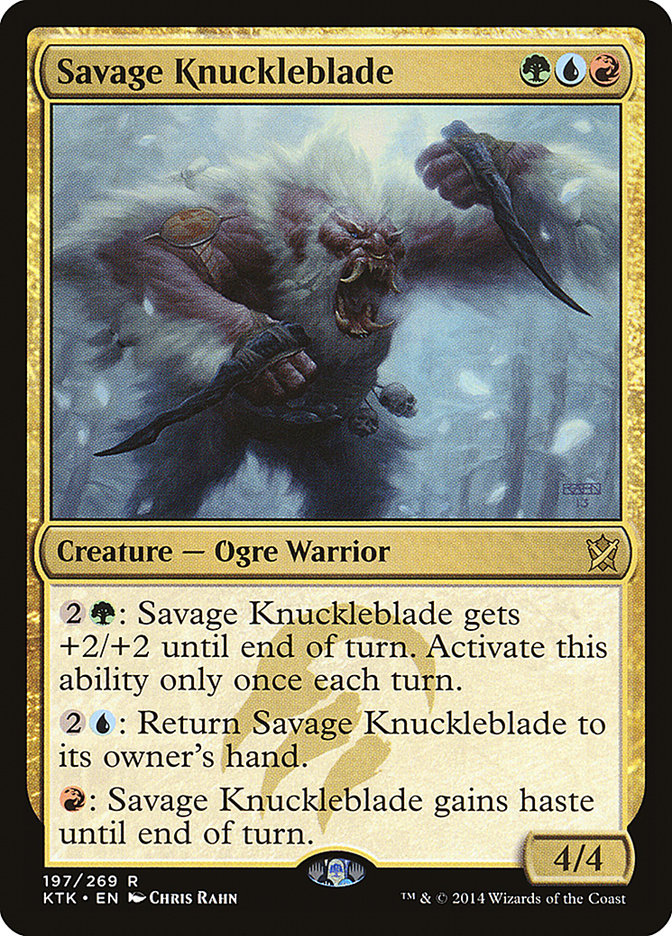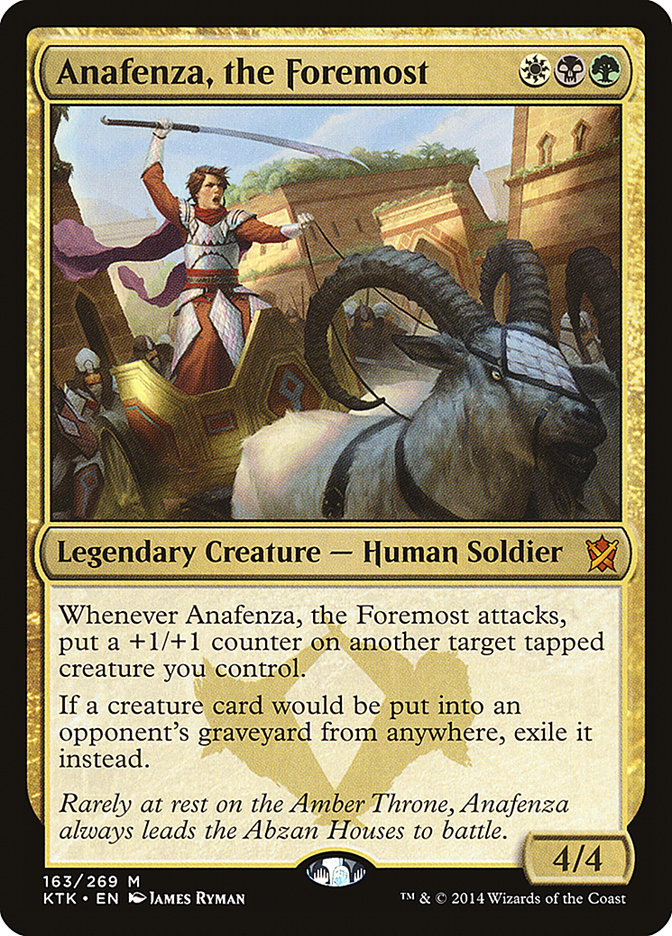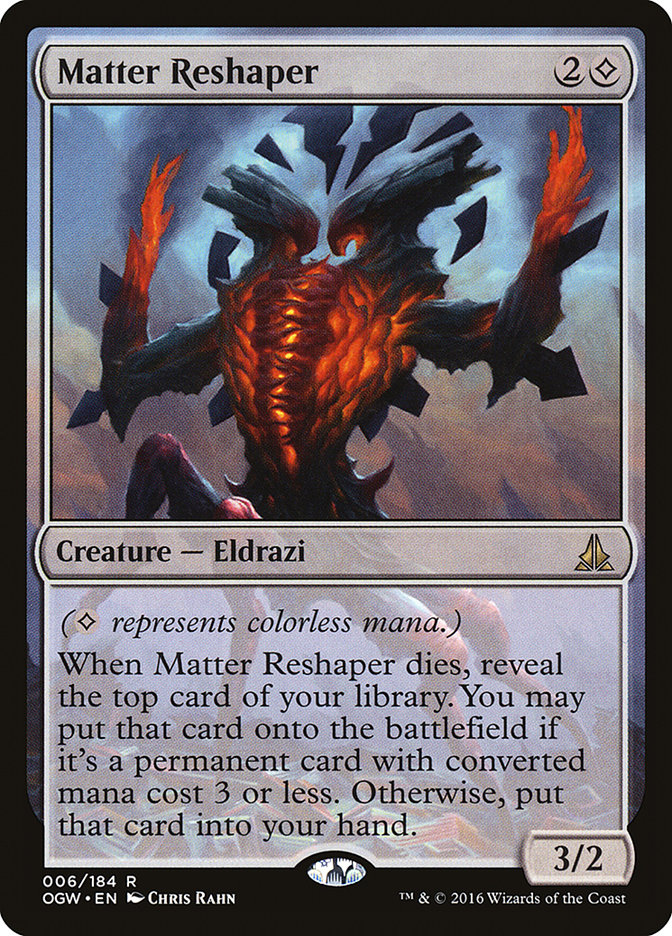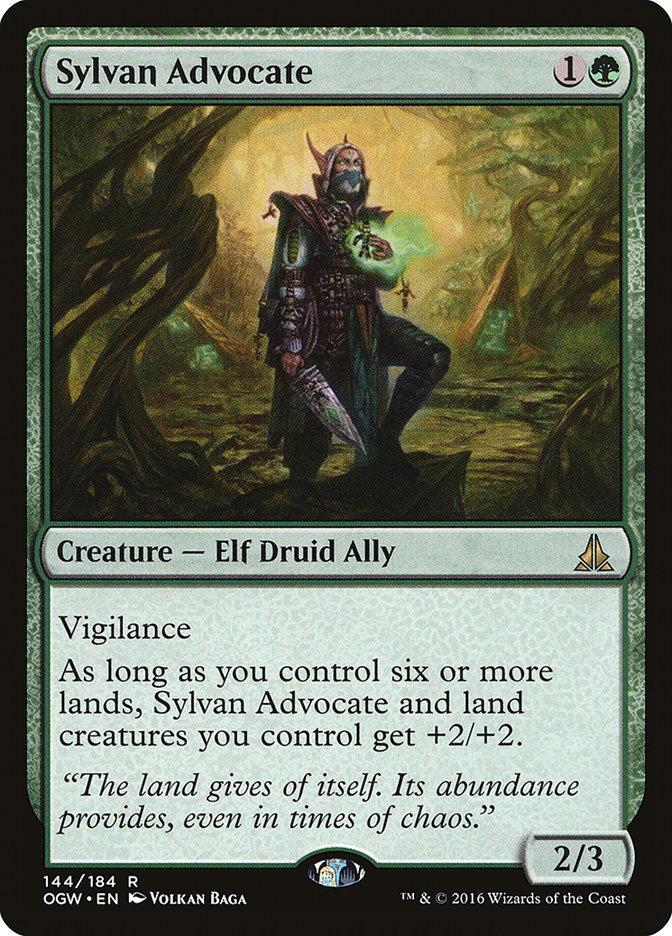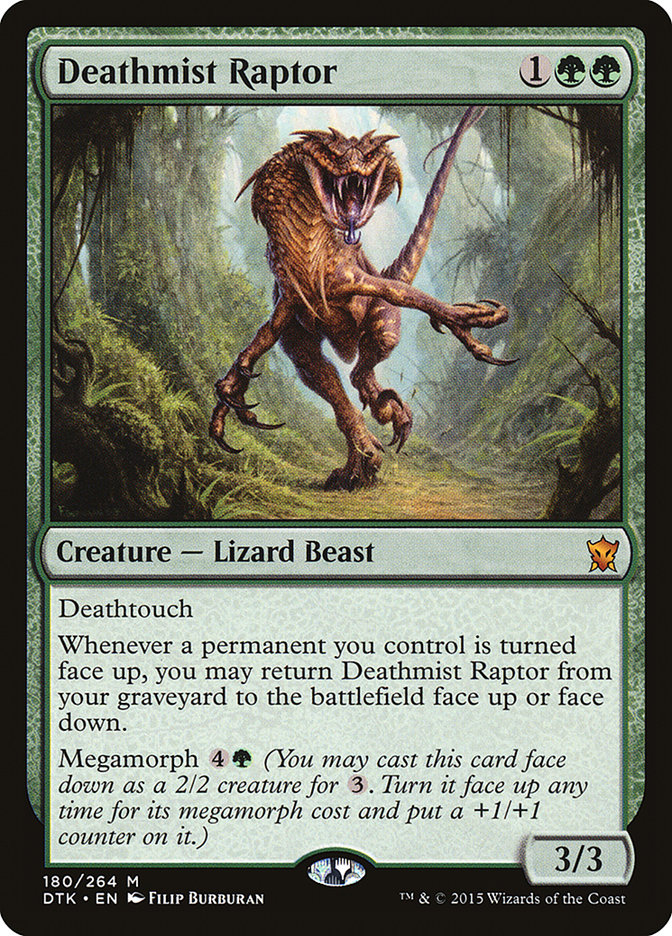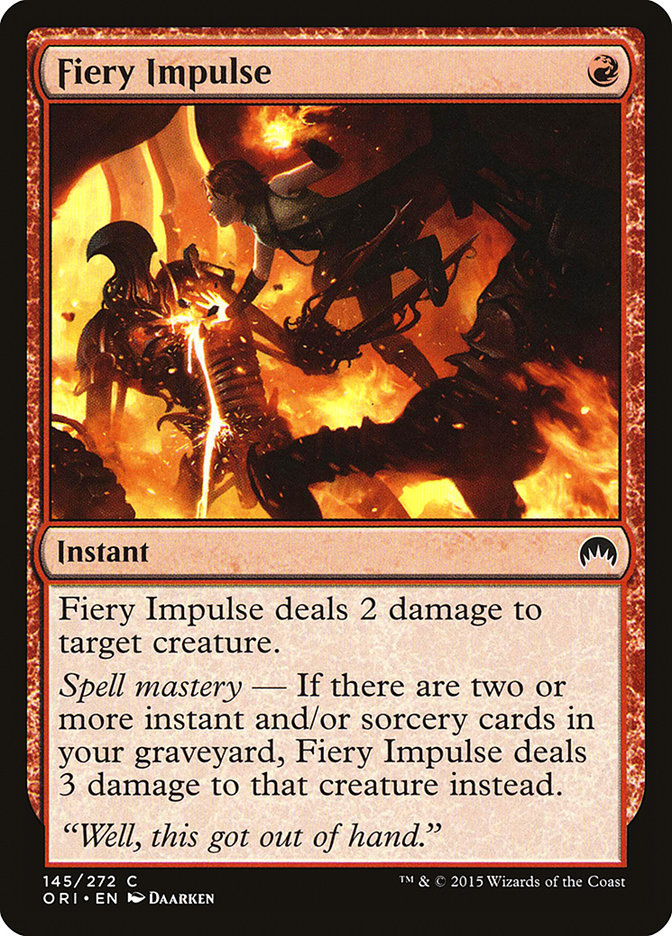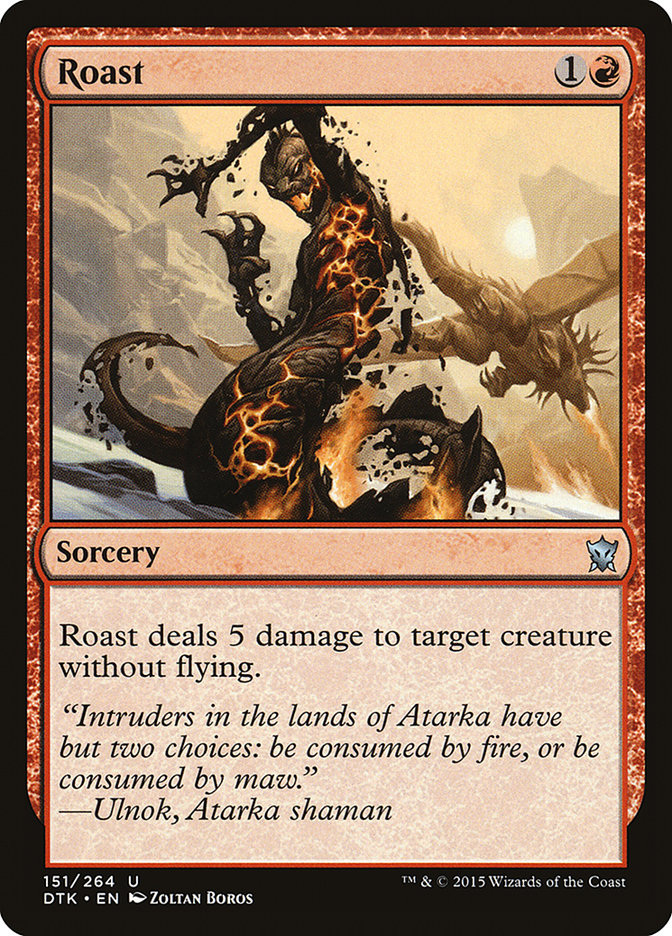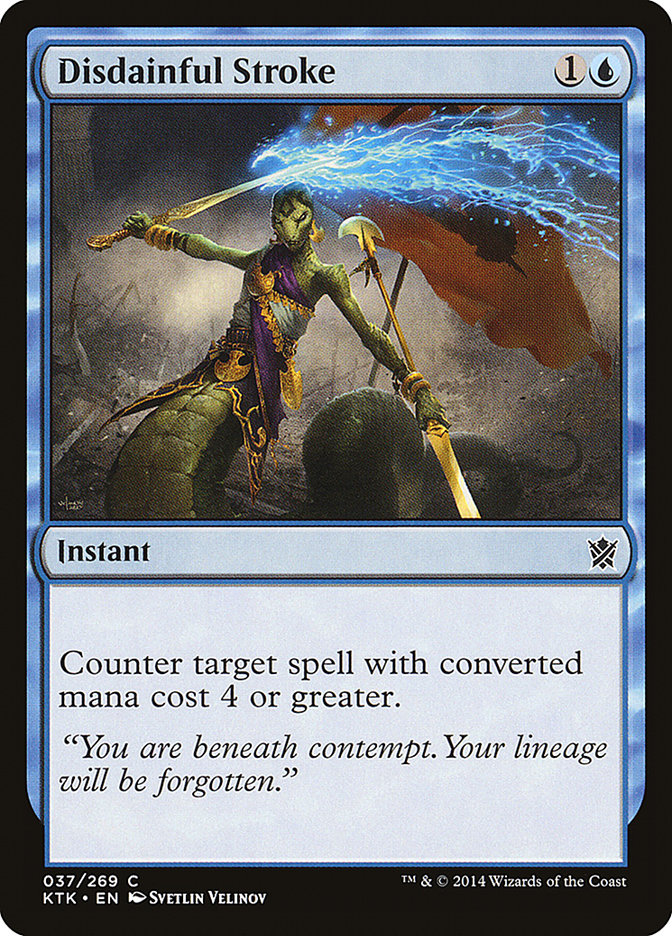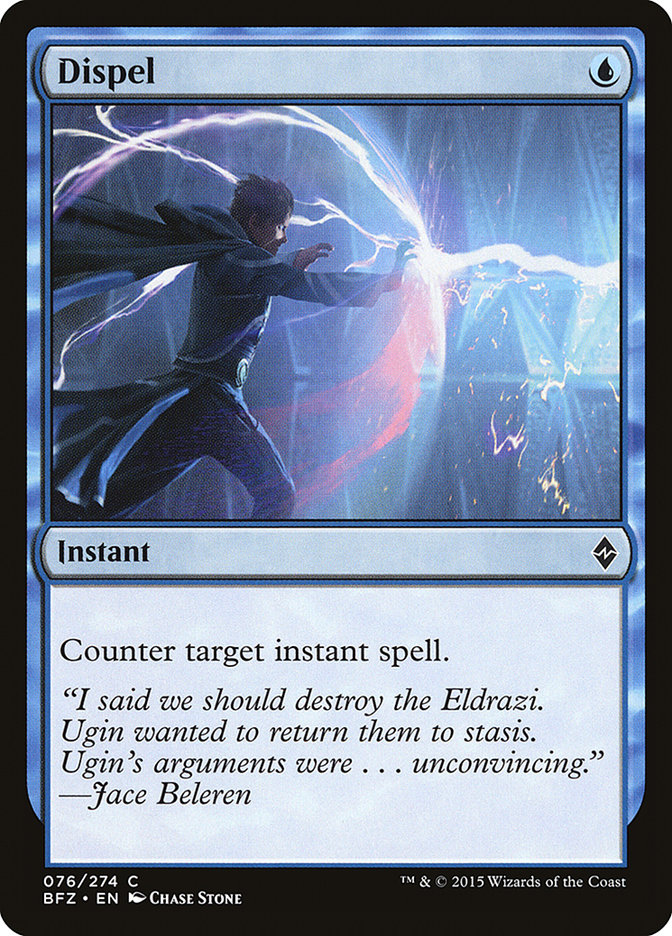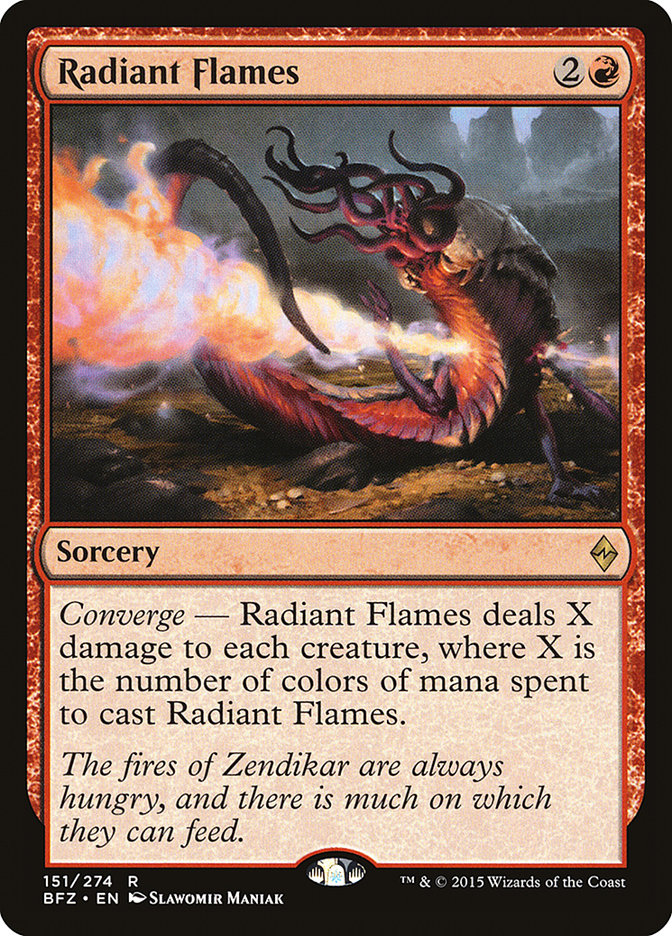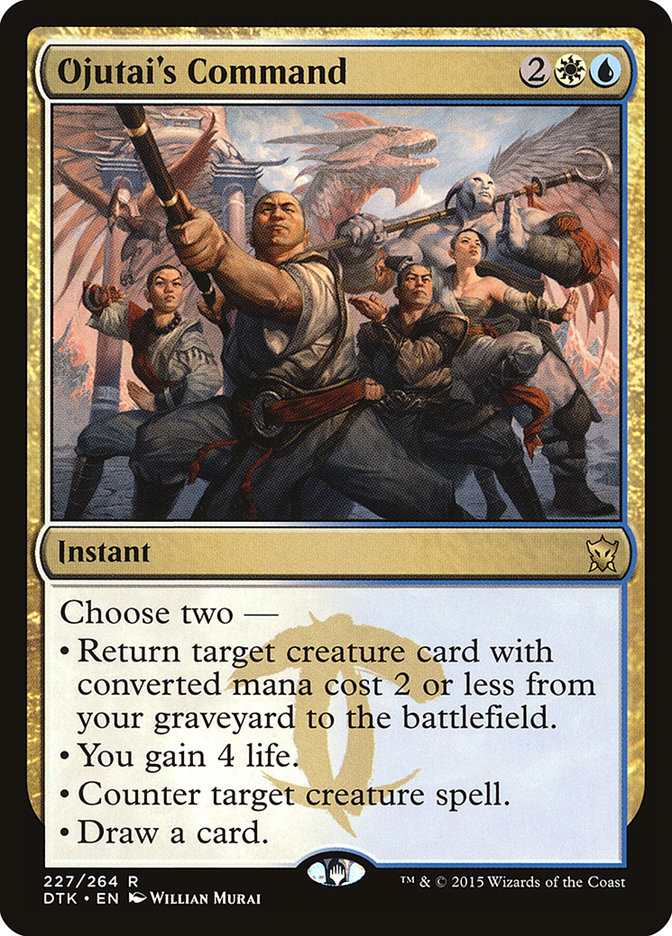I’ve never been one afraid to take risks in a major tournament. Sometimes they work out and sometimes they don’t, but it’s great to be able to step outside what is expected or comfortable. When they work it can lead to great success, and when they don’t they can blow up in your face in spectacular fashion – but either way it is going to be exciting.
Last weekend at #SCGCOL I did something I never thought I would do in an important Standard tournament: I played four copies of this card:
Yes, the card I have made fun of constantly since it has been a legal card in Standard. When I showed my deck to a few friends Saturday morning, they all gave me the look that I have given anyone brave enough to register a Temur deck since the clan’s inception:

So why have Temur decks been so bad? Is Savage Knuckleblade really the worst creature ever printed? Is Frontier Bivouac worse than Sorrow’s Path?
The answer, of course, is complicated.
Savage Knuckleblade is actually a pretty solid creature. Just being a split card of a three-mana 4/4 and a four-mana hasted 4/4 is very good, and the other abilities are just gravy. Knuckles compares favorably to the popular Anafenza, the Foremost, but the issue is context and the company he keeps.
While Anafenza gets to tag team with two of the most powerful cards in the format in Siege Rhino and Abzan Charm, Savage Knuckleblade is left with some mediocre removal spells and support cards that aren’t sure if they want to be aggressive or controlling.
Three-color cards play better in midrange strategies because it’s hard to cast them quickly while curving out, and Abzan is the better midrange deck in every sense of the word. For the entire time that Savage Knuckleblade has been legal, playing it basically means you are playing a deck with a confused strategy that is just worse than the proven Siege Rhino strategies.
So what changed that would make me want to sleeve up Knuckles?
The emergence of Collected Company as a viable option has opened the door for Savage Knuckleblade. Collected Company wants to play alongside the best three-mana creatures in the format, and despite the lack of support, Savage Knuckleblade is actually a powerful three-mana creature.
Creatures (25)
- 4 Anafenza, the Foremost
- 2 Warden of the First Tree
- 4 Den Protector
- 4 Deathmist Raptor
- 2 Nissa, Vastwood Seer
- 2 Ayli, Eternal Pilgrim
- 4 Sylvan Advocate
- 3 Matter Reshaper
Lands (25)
Spells (10)

Amusingly enough, it started with Anafenza, the Foremost. Andy Ferguson’s Abzan Company deck from #SCGATL was pretty impressive, but I didn’t like how awkward the early-game mana and Dromoka’s Command were. It seemed like the deck would be a bit slow to get on the board and would want a removal spell that could be cast early before the good creatures showed up. As my car of Dan Jessup, Andrew Jessup, and Pete Ingram discussed how to build Collected Company decks on our nine-hour car ride, we went through all the reasonable color combinations and what Collected Company decks need to operate.
Collected Company is a busted Magic card when it comes to mana efficiency and spell timing. Being able to put six mana worth of two cards into play at instant speed is incredible value for only four mana, but it comes at a pretty steep deckbuilding cost.
Collected Company asks you for two things:
Your deck must have a ton of creatures.
This is the more obvious half, as missing with Collected Company is not an option. Putting zero creatures into play is unacceptable, and putting in only one is not far behind. Magic tournaments are long events, and without enough targets, the law of large numbers is going to catch up to you if you skimp too hard on creatures.
As a result of around 30 of your deck slots going to creatures and Collected Company and around 25 of your deck slots going to lands, you are not going to have much room at all for removal or utility spells. This can make it difficult to interact and puts a premium on creatures that have spell-like effects. The spells you do choose are going to be very important.
It is also difficult to skip on lands in a Collected Company deck, as you really want to be able to play your four-mana spell on turn 4 every game, and this requires at least 24 lands.
Your creatures must be high-value.
This is the much more difficult half to accomplish, and one of the major reasons why Collected Company hasn’t seen a ton of play in Standard but a good amount in Modern.
The creatures you are putting onto the battlefield have to be excellent in all stages of the game, and are usually going to cost three mana to give you the most value. Putting a pair of Savannah Lions into play for four mana isn’t even good, and most one-drops are not going to provide you the value that you need. Much like Bloodbraid Elf wanted you to play with the best three-mana spells you could to get the most value off your cascades, Collected Company operates similarly.
This means your deck is going to have a lot of three-mana plays in it, and you are going to need to find two-mana creatures that are powerful later in the game. Oath of the Gatewatch has filled those holes, and now we have enough critical mass to make Collected Company worth building around.
As we went through the possible combinations, Temur stood out to us. Blue gave us access to one of the best cards in the format in Jace, Vryn’s Prodigy, and even though our deck was so creature-dense just being able to flash back Collected Company was very powerful. Jace would also allow us to get more use out of the few removal spells we could play. Last, being able to discard Deathmist Raptors for value is very powerful.
The new Sylvan Advocate filled out the mana curve and fits the criteria of “high-value creature good in all stages of the game.” Growing to a 4/5 in the midgame is no joke, and neither is turning your Lumbering Falls into 5/5s. Sylvan Advocate is one of the best cards in Oath of the Gatewatch and a fantastic addition to any Collected Company deck.
Being Temur also opened the door for Matter Reshaper, a brand-new card that is tailor-made for a Collected Company strategy. Being an enemy-colored “wedge” allows us to play eight on-color painlands, which makes casting Matter Reshaper a very reasonable thing to do. Matter Reshaper is a great card pretty much regardless, but gets the most value out of the exact same things that Collected Company does: playing lots of high-power three-mana-or-fewer creatures.
Aside from Savage Knuckleblade, red also gives us a small smattering of removal. Fiery Impulse is not at its best in this deck but it gets the job done, and the same can be said of Roast. These aren’t exciting removal spells like we would get from black or white, but they do the job that needs to be done. Thankfully Jace, Vryn’s Prodigy and Den Protector can make it feel like we have more copies than we actually do.
Unfortunately, another one of Temur’s downfalls is the lack of quality sideboard options. Most of the best sideboard cards in the format are white, black, and blue, and we only get to use blue for some quality countermagic. Both Disdainful Stroke and Dispel are important against various decks and play well with Collected Company and Den Protector.
Radiant Flames is good against the format’s red decks, but the lack of reasonable lifegain hurts the deck as well. The other red cards in the board are Roast and Rending Volley, but they are really just average removal spells and not the kind of sideboard cards you’d really like to have. You want your sideboard cards to be game changers, not reasonable removal spells.
Building a strong Collected Company sideboard is already difficult because you can only afford to cut so many creatures from your deck. Temur colors just don’t offer that many good utility creatures.
Creatures (25)
- 1 Warden of the First Tree
- 4 Den Protector
- 4 Deathmist Raptor
- 4 Jace, Vryn's Prodigy
- 4 Bounding Krasis
- 4 Reflector Mage
- 4 Sylvan Advocate
Lands (25)
Spells (10)
Sideboard

While I was messing around with Savage Knuckleblade, Andy Ferguson was changing his colors as well, going from Abzan to Bant.
One of the cards I really wanted to play was Reflector Mage, but I didn’t really have time to flesh out the Temur/Jeskai plan. Andy showed the world what everyone is starting to realize: Reflector Mage is insane and the perfect complement to Collected Company.
I also really like the use of Ojutai’s Command in this deck, as it creates a great problem for your opponent on turn 4. They need to decide if they should hold back their threat to play around Ojutai’s Command or develop their board so they can beat a Collected Company. Being able to return Jace, Vyrn’s Prodigy and Sylvan Advocate in the midgame is also a huge draw.
It feels like we are just starting to tap into the potential of Collected Company in Standard. Don’t forget that Four-Color Rally is also a Collected Company deck, which means there are at least four different Collected Company decks to choose from at the moment.
I wouldn’t be surprised if someone shows up to the next SCG Tour® stop with another new look at the deck…and I also wouldn’t be surprised if it was Andy Ferguson.
May you always remain in good Company!


